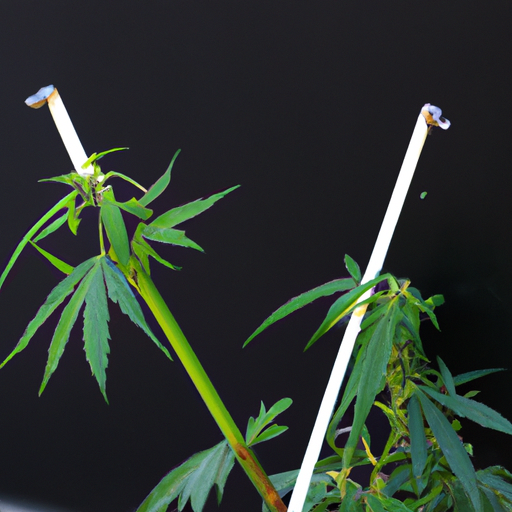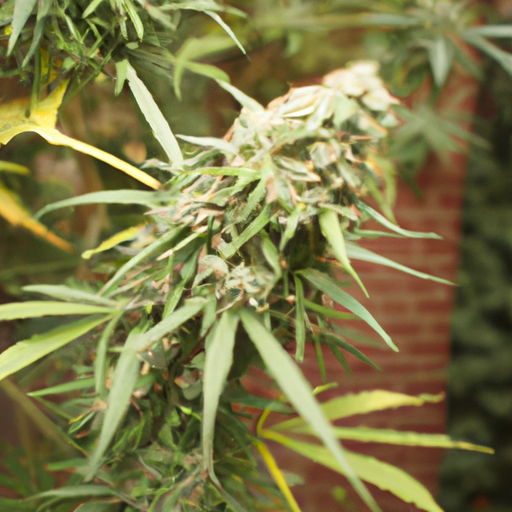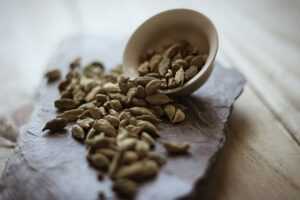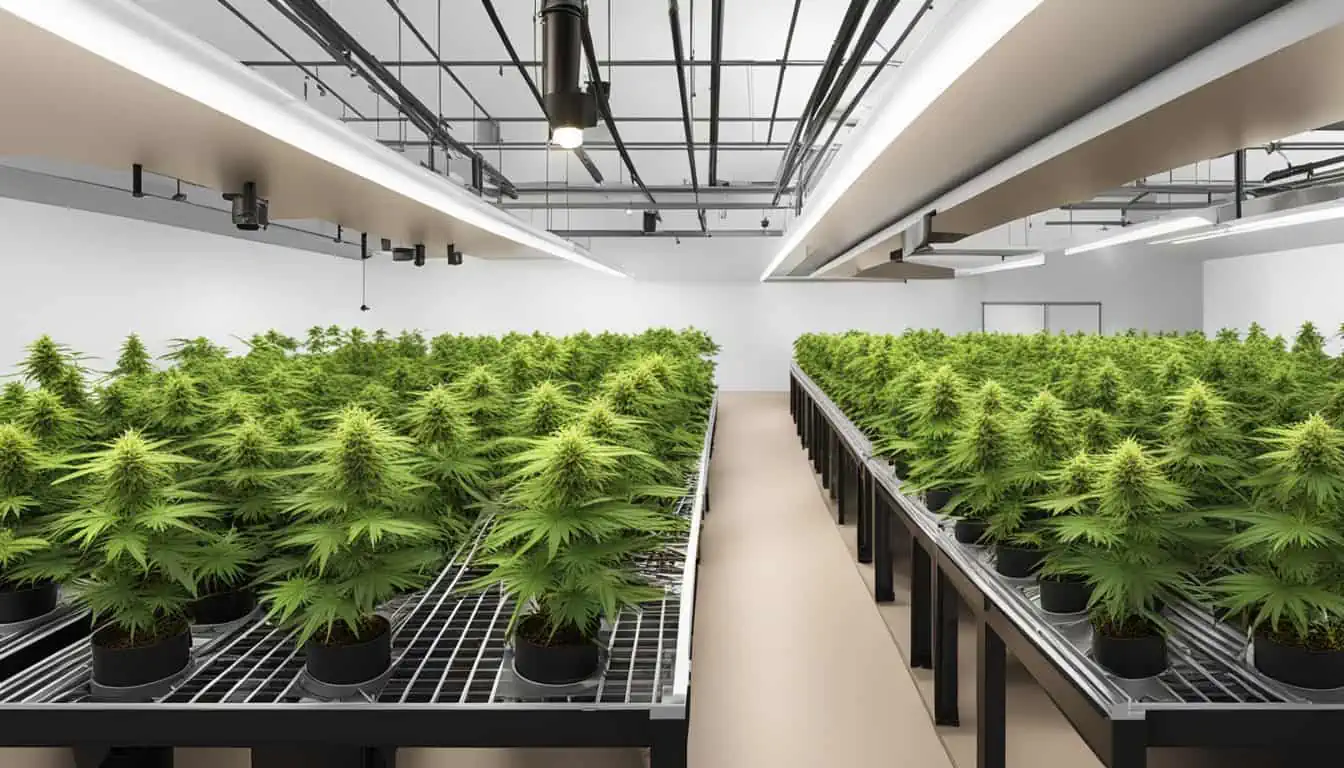This professional guide provides comprehensive insights into various cannabis training techniques to maximize your indoor cannabis yield. It delves into a range of strategies, from low-stress training to high-stress methods, providing step-by-step guidance to optimize the growth and production of your indoor cannabis plants. Harness the power of these techniques to increase your cannabis yield substantially.
Understanding the Basics: What is Cannabis Training?
Cannabis training refers to a set of techniques used to manipulate the growth and development of cannabis plants in order to maximize their yield. These techniques involve physically altering the plants’ structure, directing their energy towards the production of larger and denser buds. By understanding and implementing cannabis training techniques, growers can ensure that their plants reach their full potential and produce bountiful harvests.
There are several cannabis training techniques that growers can employ, each with its own unique advantages and considerations. These techniques include low-stress training (LST), high-stress training (HST), screen of green (ScrOG), and pruning. Each technique involves different methods of manipulating the plants’ growth patterns, such as bending or tying branches, removing foliage, or controlling their exposure to light.
The goal of cannabis training is to create an optimized canopy, where all parts of the plant receive an equal amount of light and airflow. This ensures that each bud site has the potential to develop fully and produce high-quality flowers. By training cannabis plants, growers can also promote better nutrient uptake, reduce the risk of pests and diseases, and improve overall plant health.
It is important to note that different strains and cultivars of cannabis may respond differently to training techniques. Therefore, it is crucial for growers to understand the specific needs and characteristics of their plants in order to choose the most suitable training method. Additionally, proper timing and technique are essential for successful training, as incorrect or excessive manipulation can stress the plants and negatively impact their growth.

1. An illustration showing the basic anatomy of a cannabis plant
The more the merrier: How Can Low-Stress Training (LST) Boost Your Cannabis Yield?
Low-stress training (LST) is a popular technique among cannabis growers for maximizing their yield. LST involves gently bending and securing the branches of the plant to create a more horizontal and even canopy. This technique allows for better light penetration and distribution throughout the plant, resulting in increased bud development and overall yield.
By training the plant to grow horizontally, LST helps to ensure that all parts of the plant receive an equal amount of light. This prevents the lower branches from being shaded by the upper ones, which can lead to reduced bud development in those areas. With LST, growers can effectively utilize every inch of their grow space and optimize the light available to each bud site.
Another advantage of low-stress training is that it promotes better airflow and reduces the risk of mold and disease. By opening up the plant and creating more space between branches, LST allows for improved air circulation, preventing the buildup of moisture and humidity that can lead to fungal infections. This not only helps to maintain the health of the plant but also contributes to higher yields by minimizing the risk of crop loss.
LST is a versatile technique that can be used throughout the vegetative stage of the plant’s growth. It is particularly effective for strains that tend to grow tall and stretchy, as it helps to control their height and promote a more compact and bushy shape. Additionally, LST can be combined with other cannabis training techniques, such as pruning or ScrOG, to further enhance its benefits and maximize yield potential.
High-Stress Training (HST): Isn’t it Too Risky For My Plants?
High-stress training (HST) is a technique that involves more drastic methods of manipulating the cannabis plant to maximize yield. While it may sound intimidating, when done properly, HST can be a highly effective method for increasing bud production. However, it is important to understand the risks and limitations associated with this technique.
- The Art of Topping:
Enhancing Branch Development
One common HST method is topping, which involves removing the top growth tip of the main stem. This encourages the plant to redirect its energy towards lateral branch development. By topping the plant early in the vegetative stage, growers can create a bushier plant with multiple main colas, resulting in a higher yield of evenly sized buds. - FIMing:
Encouraging Multiple Colas
FIMing is another HST technique where a small portion of the main growth tip is pinched or cut, rather than removed entirely like in topping. This method stimulates the growth of multiple colas and can result in a more even canopy with increased bud sites. However, caution must be exercised as improper FIMing can lead to stunted growth or damage to the plant. - Super Cropping:
Enhancing Branch Strength and Yield
Super cropping involves gently squeezing or bending the stems to create stress points, which triggers the plant’s natural response to strengthen and repair itself. This technique not only strengthens the branches but also promotes increased nutrient flow and bud development. However, it is crucial to be gentle and avoid causing excessive damage to the plant.While HST techniques can be highly effective, it is important to approach them with caution and gradually introduce stress to the plants. It is recommended to only implement these techniques during the vegetative stage when the plant has ample time to recover and adapt. Additionally, it is crucial to closely monitor the plants for any signs of stress or damage and adjust the training methods accordingly.

A before-and-after image comparison of a plant subjected to high-stress training
Screen of Green (ScrOG): A Worthy Investment?
The Screen of Green (ScrOG) technique is a popular training method that involves using a screen or net to create a horizontal canopy. The purpose of this technique is to maximize light exposure and promote an even canopy, resulting in increased bud production.
The process begins by installing a screen about 12 to 18 inches above the plants during the vegetative stage. As the plants grow, their branches are gently trained and woven through the screen, ensuring that each branch receives an equal amount of light. This helps to prevent the lower branches from becoming shaded and promotes uniform growth throughout the canopy.
One of the main advantages of ScrOG is its ability to optimize light distribution. By spreading out the branches and creating a flat canopy, growers can ensure that all parts of the plant receive adequate light, leading to increased photosynthesis and bud development. This technique is especially beneficial in indoor settings where light penetration can be a challenge.
Another benefit of ScrOG is its ability to control plant height. By training the branches to grow horizontally, the plants are encouraged to grow wider rather than taller. This can be particularly useful for growers with limited vertical space, allowing them to maximize their yield within a confined area.
However, it is important to note that ScrOG requires careful planning and maintenance. The screen must be regularly adjusted to accommodate the growth of the plants, ensuring that all branches are effectively positioned. Additionally, pruning and defoliation may be necessary to maintain an optimal canopy and prevent excessive shading.
Less is more: Can Pruning Really Improve My Cannabis Yield?
Pruning is a technique that involves selectively removing certain parts of the cannabis plant, such as leaves, branches, or nodes. While it may seem counterintuitive to remove parts of the plant in order to improve yield, pruning can actually have a significant positive impact on the overall productivity of your cannabis crop.
- Benefits of Pruning:
Pruning serves several purposes that can ultimately lead to higher yields. By removing excessive foliage, pruning allows better light penetration to reach the lower parts of the plant, promoting more efficient photosynthesis and bud development. Additionally, pruning helps to improve air circulation around the plants, reducing the risk of mold and mildew, which can negatively affect yield. Pruning also encourages the plant to focus its energy on producing larger, more potent buds rather than wasting resources on unnecessary vegetative growth. - Timing and Techniques:
Timing is crucial when it comes to pruning cannabis plants. It is generally recommended to start pruning during the vegetative stage, once the plants have developed a few sets of true leaves. Common pruning techniques include topping, which involves removing the top portion of the main stem to encourage lateral growth and removing lower branches or sucker growth to redirect energy towards the main canopy. It’s important to note that pruning should be done with clean, sterilized tools to minimize the risk of introducing pathogens or damaging the plant. - Pruning Considerations:
While pruning can be beneficial for improving yield, it’s important to exercise caution and not overdo it. Removing too many leaves or branches can stress the plant and potentially reduce its overall health and productivity. It’s recommended to start with light pruning and observe how the plant responds before making further adjustments. Additionally, some strains may be more sensitive to pruning than others, so it’s important to research and understand the specific needs of your cannabis variety before implementing pruning techniques.

A photo demonstrating the right and wrong ways to prune cannabis plants
The Impact of Light Distribution on Cannabis Yield
Proper light distribution plays a crucial role in maximizing cannabis yield. When it comes to indoor cultivation, it is essential to ensure that every part of the plant receives adequate light exposure.
First and foremost, it’s important to position your grow lights in a way that evenly covers the entire canopy. Uneven light distribution can lead to uneven growth, with some parts of the plant receiving more light than others. This can result in stunted growth and lower yields.
To achieve optimal light distribution, consider using reflective materials such as Mylar or white paint on the walls and floor of your grow space. These materials help to bounce light back onto the plants, reducing the chance of light being lost or absorbed by the surroundings.
In addition to the positioning of grow lights and reflective materials, the use of light movers can greatly benefit light distribution. Light movers are devices that slowly move the grow lights back and forth, ensuring that light reaches all parts of the plant. This helps to prevent shadowing and allows for more uniform growth and bud development.
It’s also important to consider the distance between the grow lights and the canopy. Hanging the lights too high can result in insufficient light reaching the lower parts of the plant while hanging them too low can cause light burn and heat stress. Finding the right balance and adjusting the height as the plants grow is crucial for maximizing yield.
Troubleshooting Common Issues: Why Isn’t My Yield Improving?
There are several common issues that can prevent your cannabis yield from improving, even after implementing various cannabis training techniques. One possible problem could be nutrient deficiencies or imbalances in the soil. Inadequate levels of essential nutrients like nitrogen, phosphorus, and potassium can negatively impact plant growth and yield. Conducting regular soil tests and adjusting nutrient levels accordingly can help address this issue.
Another potential issue could be improper pH levels in the soil or water. Cannabis plants thrive in a slightly acidic pH range of 6.0 to 6.5. If the pH is too high or too low, it can affect nutrient availability and uptake, leading to stunted growth and reduced yields. Testing the pH of your soil or water and making necessary adjustments can help rectify this problem.
Inadequate or improper lighting can also hinder yield improvement. Insufficient light intensity or duration can limit photosynthesis and hinder plant growth. On the other hand, excessive light intensity or heat from the grow lights can cause stress and damage to the plants. Ensuring the right balance of light and avoiding light stress is crucial for maximizing yield potential.
Pest infestations can also have a detrimental effect on cannabis yield. Common pests such as aphids, spider mites, and fungus gnats can feed on the plants and inhibit growth. Regular monitoring, proper hygiene, and implementing integrated pest management strategies can help prevent and control pest infestations.
Finally, genetics can play a significant role in yield potential. If you’re not seeing improvements in your yield despite implementing cannabis training techniques and addressing other potential issues, it could be worth considering the genetics of your cannabis strains. Some strains naturally produce higher yields than others. Researching and selecting high-yielding strains can help maximize your cannabis yield.

7. A series of images showing common problems affecting cannabis yield and their solutions
Indoor Cannabis Training Techniques:
| Training Technique | Description | Benefits | Difficulty |
|---|---|---|---|
| Low-Stress Training | A method of training cannabis plants by gently bending the stems and branches | Increases the number of main colas and helps promote even growth | Easy |
| Topping | A method of training cannabis plants by cutting off the top of the main stem | Increases the number of main colas and encourages even growth | Moderate |
| Fimming | A method of training cannabis plants by cutting off the top of the main stem with four cuts | Increases the number of main colas and promotes even growth | Difficult |
| Super Cropping | A method of training cannabis plants by pinching and bending the stems and branches | Increases the number of main colas and encourages even growth | Moderate |
In conclusion, leveraging the right cannabis training techniques can significantly maximize your indoor cannabis yield. However, it’s crucial to understand that each plant is unique and will respond differently to various training methods. Hence, it’s essential to monitor your plants closely, adjust techniques as necessary, and always prioritize the health of your plants over yield.





